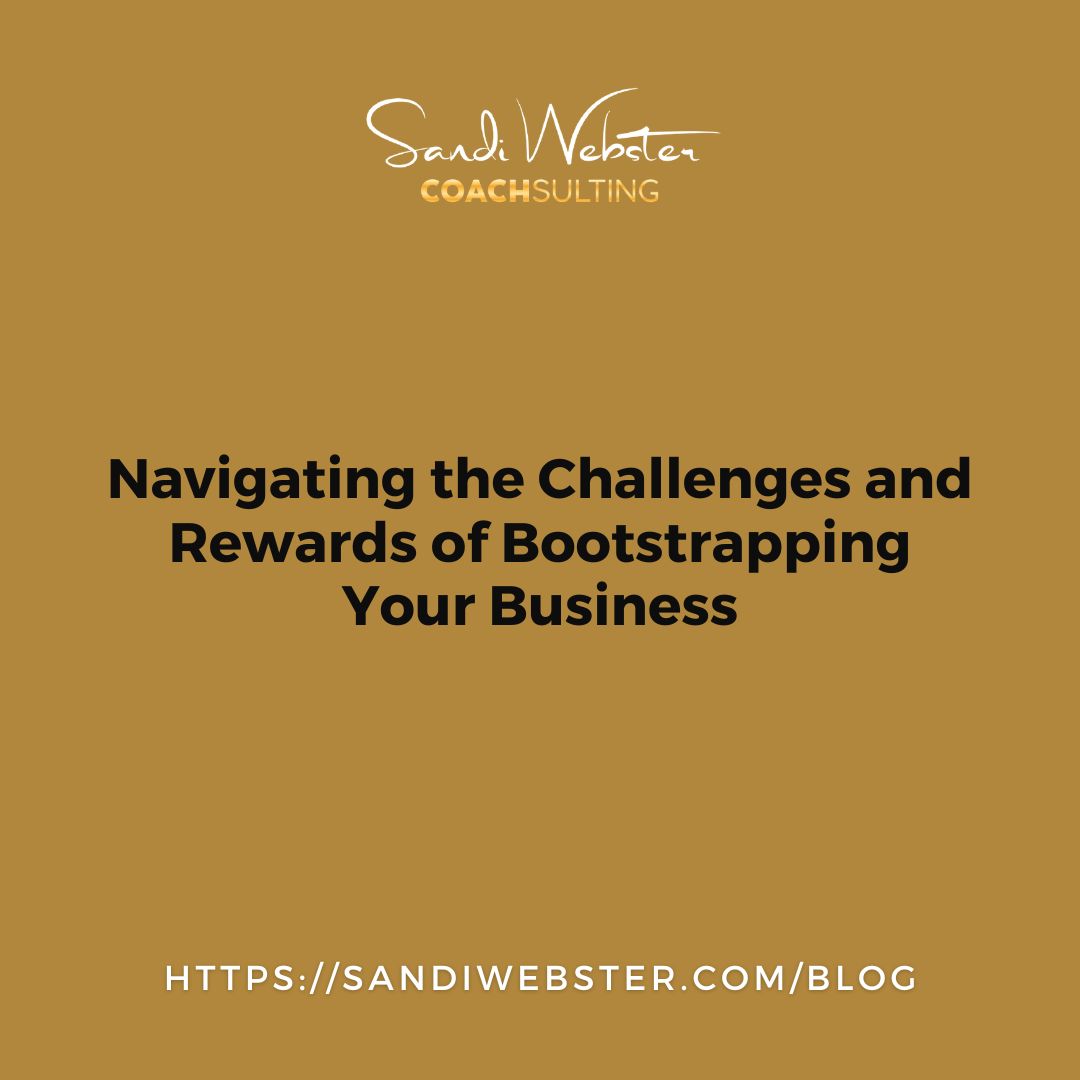Navigating the Challenges and Rewards of Bootstrapping Your Business
Bootstrapping means starting and growing your business using your own resources without relying on external funding. In 2002, after being laid off from the corporate world, my business partner and I decided to start a marketing and analytic consulting company. Looking at our financials, we decided to bootstrap our new business. We were getting a severance package, and didn’t want to take out any loans to get started.

Here are a few strategies we, and new entrepreneurs, deployed.
- Personal Savings: This is the most common method. Using your own savings to fund your business gives you full control and avoids debt. It’s important to have a clear budget and financial plan to ensure your savings last.
We started our business with about $2500 each. It went to the basic things – a computer and business cards were at the top of our list. We also created a trifold brochure of our services. Today, money can be saved by using LinkedIn or contact apps like HiHello for business contact information, and a pdf document can be emailed or attached for our brochure.
- Reinvesting Profits: Once the business starts generating revenue, reinvest the profits back into the business. This can help you grow organically without needing outside investment.
Of course, this might be a long-term strategy if you have payroll to meet or machinery that breaks down, or any emergency that makes you seek financial backing. Of course, this is after paying all your bills and paying yourself!
- Minimize Expenses: Keep your overhead low by working from home, using free or low-cost software, and negotiating with suppliers for better terms. Every dollar saved is a dollar that can be reinvested.
Watching our expenses was at the top of our strategy list. We worked from home for several years and only moved to a physical space when we started to grow and needed to meet in-person with our team. Even so, we shared an office in an incubator in Newark, NJ with another business owner. Then, we moved into our own space at a fraction of the cost of a NYC office.
- Customer Pre-orders: If possible, secure pre-orders from customers. This not only provides upfront capital but also validates your product or service in the market.
Authors have asked for pre-orders and it works. In the consulting business, pre-order for us meant we booked a consultant for more than one consecutive project. We found that marketing departments tend to have unused budgets at the end of the year, and they don’t want to lose it. We took the order and had them pay with the stipulation that the future work might change, and we would change the contract to match.
- Bartering Services: We often engaged in bartering to exchange goods or services without using cash. This can be a strategic way to conserve cash flow while still obtaining necessary resources.
- Marketing and Advertising Services: Businesses often trade their products or services for marketing expertise, such as social media management, graphic design, or advertising space.
- Office Space: Some businesses might barter their services in exchange for office space or co-working memberships, which can be a significant cost-saving measure.
- Professional Services: Legal, accounting, or consulting services are frequently bartered. For example, a web designer might create a website for an accountant in exchange for tax preparation services.
- Technology and IT Support: Businesses might trade their offerings for IT support, software development, or tech equipment.
- Event Services: Catering, photography, or event planning services are often bartered, especially among businesses in the hospitality or creative industries.
- Part-time Work: Maintain a part-time job while you build your business. This provides a steady income stream to cover personal expenses and reduces financial pressure.
- Crowdfunding: Platforms like Kickstarter or Indiegogo allow you to raise small amounts of money from a large number of people. This can also help build a community around your product or service.
- Family and Friends: While it can be risky, borrowing from family and friends is a common way to get initial funding. Be sure to have clear terms and agreements to avoid misunderstandings.
Bootstrapping a business comes with its own set of challenges and benefits. Here are some of the downsides, challenges, and risks associated with bootstrapping:
Downsides, Challenges, and Risks:
- Limited Resources: Without external funding, you may have limited financial resources, which can restrict your ability to scale quickly or invest in necessary infrastructure.
- Cash Flow Management: Managing cash flow can be particularly challenging, as you need to ensure that you have enough funds to cover operational expenses while also investing in growth.
- Slower Growth: Without significant capital, growth may be slower compared to businesses that receive substantial funding from investors or loans.
- Personal Financial Risk: Entrepreneurs often use personal savings or assets to fund their business, which can be risky if the business fails.
- Limited Network and Expertise: Without investors, you might miss out on the valuable network and expertise that they can provide, which can be crucial for strategic guidance and opening doors to new opportunities.
Benefits of Bootstrapping:
- Control and Ownership: You retain full control and ownership of your business, allowing you to make decisions without needing to consult with investors or meet their expectations.
- Financial Discipline: Bootstrapping forces you to be financially disciplined and resourceful, which can lead to more sustainable business practices.
- Focus on Profitability: Since you rely on your own resources, there is often a greater focus on achieving profitability early on, which can lead to a more stable business model.
- Flexibility: Without the pressure from investors, you have the flexibility to pivot or make changes to your business model as needed without external constraints.
- Long-term Value: By not diluting equity early on, you may retain more value in the long term if the business becomes successful.
Overall, bootstrapping can be a rewarding approach for entrepreneurs who are willing to take on the challenges and risks in exchange for greater control and potential long-term benefits.
Here are a few notable examples of successful entrepreneurs who bootstrapped their businesses to millions, and their stories are truly inspiring:
- Sara Blakely – She is the founder of Spanx, a company that revolutionized the shapewear industry. Sara started Spanx with just $5,000 of her own savings and grew it into a billion-dollar business. She famously did everything from product development to marketing on her own in the early days.
- Steve Jobs and Steve Wozniak – The co-founders of Apple started the company in a garage with minimal resources. They initially funded their venture by selling personal items, like Jobs’ Volkswagen van and Wozniak’s HP calculator, to build the first Apple computer.
- Richard Branson – The founder of the Virgin Group, which now controls more than 400 companies, started his first business, a magazine called Student, with very little capital. He later expanded into the music industry with Virgin Records, which was also bootstrapped.
- Michael Dell – He started Dell Technologies from his college dorm room with just $1,000. By focusing on direct sales and custom-built computers, he was able to grow the company into one of the largest technology corporations in the world.
- Jan Koum – The co-founder of WhatsApp, which was acquired by Facebook for $19 billion, started the company with his own savings. Koum and his co-founder, Brian Acton, focused on creating a simple, user-friendly messaging app without any external funding initially.
These entrepreneurs demonstrate that with determination, creativity, and a bit of resourcefulness, it’s possible to build a successful business from the ground up without relying on external funding.
Remember, bootstrapping requires careful financial management and a lot of dedication, but it can lead to a more sustainable and independent business in the long run.


